⚡️ Growth Team of One: How to Wear Multiple Hats Without Losing Your Mind
Insights from my 6-year Miro journey and principles to stay "generalist" in the uncertain world.
Hello everyone 👋 I’m Kate Syuma, and welcome to Growthmates.news — the newsletter where we explore growth stories to inspire your professional and personal growth. Join the community of 7,000+ Product, Design, and Growth people from companies like Amplitude, Intercom, Miro, Atlassian, Grammarly, Framer, and more.
A few weeks ago, I had a live session with students of my User-Centric Growth Course. And you know what? I love these meetings because they remind me of something important: when one person voices a challenge, dozens silently nod along.
If we look at our daily tasks today, it’s clear that we all wear multiple hats. But I want you to move away from confusion, frustration, and “where do I even start?” — to clarity and actionable steps.
Today, I want to share some of my personal experiences on wearing multiple hats my whole career, and why it’s actually the best way to grow.
What’s inside today’s issue:
My Miro Growth story — operating as a "Growth Team of One";
Who is the "Growth Team of One";
The Golden Rule of Growth ⭐️;
3 Ways to Align PM + Design Mindsets;
Key Takeaways and Actions to Build This Mindset.
Before we dive in… Meet Growthmates Bundle 🚀
I created the Growthmates Bundle to share not just ideas — but the tools I trust and use in my own work. Each one is a handpicked #1 tool for a key product area, and I’m proud to have them supporting this newsletter 🖤
Best way to support Growthmates? Explore these fantastic tools below 👇
Framer — the fastest way to design and publish stunning websites (Growthmates.club is built on it).
Mobbin — the largest UX & UI reference library for deep product inspiration.
Beacon AI — the smartest AI agent for product and design teams to identify and fix UX issues that block activation, retention, and conversion.
🔥 PS: Missed the previous cohorts? This one’s for you!
The next cohort of my User-Centric Product-Led Growth program kicks off on October 27. If you work on user activation, habit loops, or upgrade flows and want a tested growth roadmap you can start using in 3 weeks — we cover it all, step by step.
New cohort is open 🎉 3 seats left at the old price — you can save $250, and get more value for that than ever. 👉 Grab your seat here (valid by 12th September).
Now, let’s dive into today’s article 👇
From Junior to Growth Leader 💭
Let me start with a personal story I showed during this live session. Because the truth is — everything I teach about growth, I first had to learn (sometimes the hard way).
I started as the 3rd UI/UX designer at RealtimeBoard (which later became Miro).
Picture this: a room full of the smartest engineers and product thinkers… and me, feeling like a total impostor.
Fast forward a few years — I became Lead Product Designer, Growth at Miro.
But it didn’t feel glamorous. I remember literally knocking on the door of leadership meetings, trying to earn a seat at the table. I’ve been on many crossroads at that time:
Having an internal offer to become a Product Manager in Growth
Thinking of becoming a User Researcher (because of my passion to spend 10-20 hours each week on user research).
But I realised that all these elements can be combined in my design career track — I can prioritise hypotheses (as PM), get insights from data (as Data analyst), interview users (as a User Researcher), and even realise myself as a people leader.
So I progressed forward, and as a Product Design Manager, Growth, I stepped into leadership myself — moving from IC to building a team and eventually relocating to Amsterdam.
That’s when I realized: growth design wasn’t just about pixels, it was about systems, funnels, and leadership.
Eventually, I became Head of Growth Product Design at Miro — building a team of 10+ people who covered the entire growth funnel. From activation to retention, we were shaping how millions of users experienced the product.
Looking back, I think that the generalist mindset moved me along my career — that I now call a “Growth team of one”. It’s the ability not to stick to just one discipline forever, but diversify what you’re doing and combine disciplines in your own unique way.
And now… I’m here. Founder of Growthmates :)
Building things from 0→1: an international business, advisory practice, podcast, courses, and (of course) this very newsletter. It feels more “generalist” than any other things I’ve done before that.
I had to learn some lessons myself:
From impostor syndrome to leadership, every stage demanded a mindset shift.
Growth isn’t just a role — it’s a way of thinking, no matter your title.
You don’t wait for permission to “own growth”, but create that path yourself.
That’s why today’s topic is so close to my heart — because I lived it. I recently shared that as a Lightning lesson on Maven, and now you can watch this recording here.👇
Who is the "Growth Team of One"?
It’s not a title. It’s a mindset.
Whether you’re a PM sketching wireframes, a designer digging into Mixpanel, or a marketer writing product specs — you’re living it. And the best companies? They’re embracing it.
I took this definition from my previous article, UX + PLG: 5 principles to multiply your value — check it out for more insights.
These 5 elements build a fundament for any Growth operator. And nowadays with a huge impact of AI on roles and team structures, I think we can see more “Growth team of one” roles on the market than ever before.
Last year, I saw how Framer was piloting hybrid combinations of PM + Product Designer for a “Product Activation Lead” role — design execution paired with ownership of KPIs and a product backlog.
Why? Because growth rewards T-shaped builders who can connect dots across craft, data, and business.
Here’s your toolkit as a solo operator:
Execution → Ship high-quality work (screens, specs, prototypes);
Data Fluency → Find stories in dashboards (no dedicated analyst? No problem);
User Research → Talk to customers before it’s someone else’s job;
Impact Prioritization → Decide what moves the needle — not just what’s shiny;
Speed → Iterate fast. Test variations. Skip 6-month dev cycles.
The Golden Rule of Growth
Before we go deeper, let me pause on one simple principle I shared with the group.
“What’s good for the USER is also good for the BUSINESS.”
Sounds obvious? Maybe. But in reality, it’s where most teams get stuck.
We over-index on features, deadlines, or internal politics — and forget that when users win, business wins too. Instead of sitting on different corners of the table, PMs and Designers should be on the same level and have shared responsibilities.
This mindset helped me at Miro when growth conversations got tough: instead of arguing opinions, we aligned around the user first. Because once you fix the real user problem, revenue and retention follow naturally.
But what if you need a culture shift and it’s not that easy? Let’s see.
3 Ways to Align PM + Design Mindsets
#1. Build Trust as Equals
📌 Designers ≠ pixel-police. PMs ≠ backlog bureaucrats.
As I shared at Miro, traditional PM/design dynamics don’t work.
Traditionally, we used to sit on "different sides of the table" — designers obsessing over quality, PMs over stakeholders. But growth demands we speak the same language.
How?
Designers, start asking PMs: “Why does our business exist? What KPIs are we optimizing for?”
PMs, ask designers: “Who are our users? What do they feel? Why does this solution solve their problem?”
The magic happens when you exchange these superpowers. In my team, designers who owned features end-to-end — from insight to revenue impact — became unstoppable. Trust isn’t given. It’s built through shared curiosity.
Once you’re speaking the same language, you face a new challenge:
How do we define ‘What Success Looks Like’?
That’s where principle #2 comes in.
#2. Define “Quality” Together.
📌 Good UX = Good Business. Prove it.
Endless debates over “polish vs. speed”? Stop. Create shared quality principles — like Notion, Figma, and Intercom do.
Why does this work? As I told the group:
Designers need business education. PMs need user-centricity training.
Quality principles bridge that gap. They turn subjective debates into objective decisions — so you spend energy on impact, not opinions. But principles alone aren’t enough. To truly move metrics, you need to connect data and psychology — which brings us to the final piece...
I have a complete list with sources to all these principles in one of the most popular articles here: High-quality principles to support your Product-Led-Growth 🚀
#3. Connect Data + Psychology.
📌 Data shows the “WHAT” Users tell the “WHY”.
Real-world example: At Miro, if data showed drop-offs at onboarding, we’d have to dig into user research to reveal what type of confusion is happening.
I love using 5-step Flow Review to demonstrate how qual. + quant. Data can be combined, and this is also the core framework we use on the User-centric growth course.
Your Superpower? Hybrid Thinking 🧠
As I shared at the end of our session:
Anyone can be a “Growth Team of One” — if you’re willing to be a generalist and combine several roles as one person. This isn’t about titles. It’s about agency.
When you embrace hybrid roles, you stop asking “Is this my job?” and start asking “How can I solve this?”
That’s how we build products users love and businesses that thrive.
Build Trust: Ask cross-discipline questions → become "T-shaped" partners.
Define Quality: Create shared principles → ship faster, debate less.
Connect Insights: Blend data + psychology → fix why, not just what.
Keep experimenting, keep bridging worlds. That’s how I went from impostor syndrome to founding Growthmates. And it’s how you’ll unlock your next leap.
Before you go...
Today’s conversation was just a glimpse into a bigger mission: helping you become that fearless "Growth Team of One" — who blends craft, strategy, and heart.
If you’re sitting at the crossroads of PM, design, and growth — wondering how to turn insights into impact without losing sleep — this is your sign. Here are a few ways I can be helpful :)
User-centric Growth Course (Next cohort starts on 27th October)
If these frameworks sparked new ideas — imagine working through your actual product challenge with live feedback, templates, and a dedicated community.
👉 Join with 250$ off for 3 seats → (by September 12)Onboarding & Activation Design Sprint 🏃♀️ ( 1 slot for Q4 🚀)
I will work closely with your team for 2 weeks to help you fix your Onboarding and improve the first user experience that can drive x2 uplift on your Activation.
👉 Check how it works →Brand Partnerships 📩
Let’s tell your product story to a trusted audience of 25,000+ product, design, and growth leaders — and co-create meaningful content that inspires the wider product and design community.
👉 Book intro call to discuss partnership →
⭐️ Quick Recap — Key Takeaways
Well, that’s a wrap for today. Before we close, let’s zoom out and highlight the main insights — the ones you can take back to your team (or your own notebook) and actually apply tomorrow 👇
Growth Team of One is a mindset, not a title — mix execution, data, research, prioritization, and speed.
Golden Rule: What’s good for the user is good for the business — let this settle arguments.
Trust first: PMs and Designers must exchange superpowers (business fluency ↔ user-centricity).
Codify quality: Shared principles turn subjective debates into objective, faster decisions.
Blend quant + qual: Metrics show where to look; user psychology reveals what to change.
Act like an owner: Don’t ask “Is it my job?” Ask “What moves the needle?” Then ship it.
This is all for today, dear readers. If you found this helpful — please share your reaction and leave some comments 💜 It would give a huge support for me to continue creating this!
If you find this newsletter valuable, share it with a friend, and consider subscribing if you haven’t already. There are some discounts available, and maybe you can expense this :)
Connect with me on LinkedIn and learn more about my work on Growthmates.club.
With best regards,
Kate Syuma



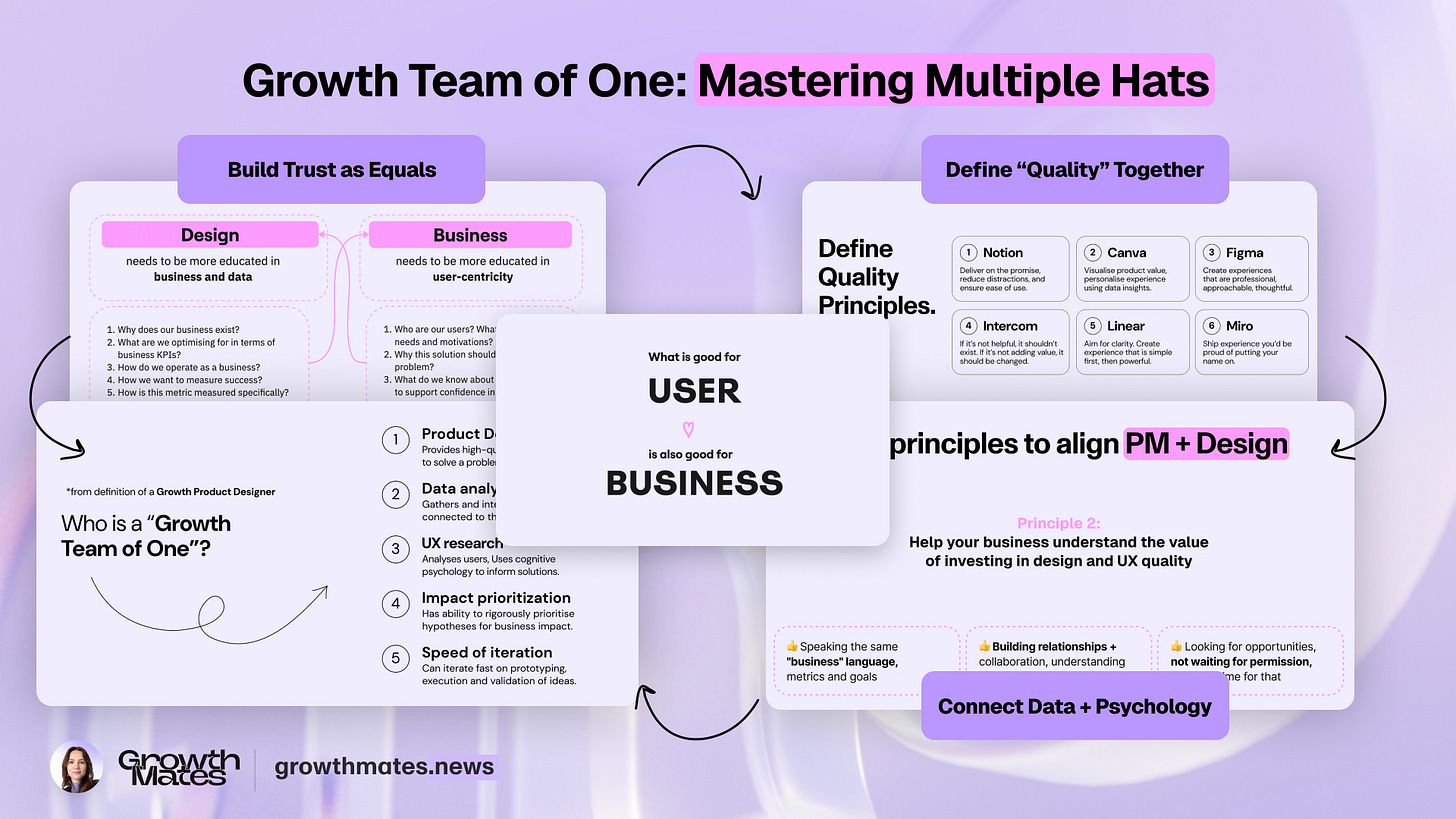

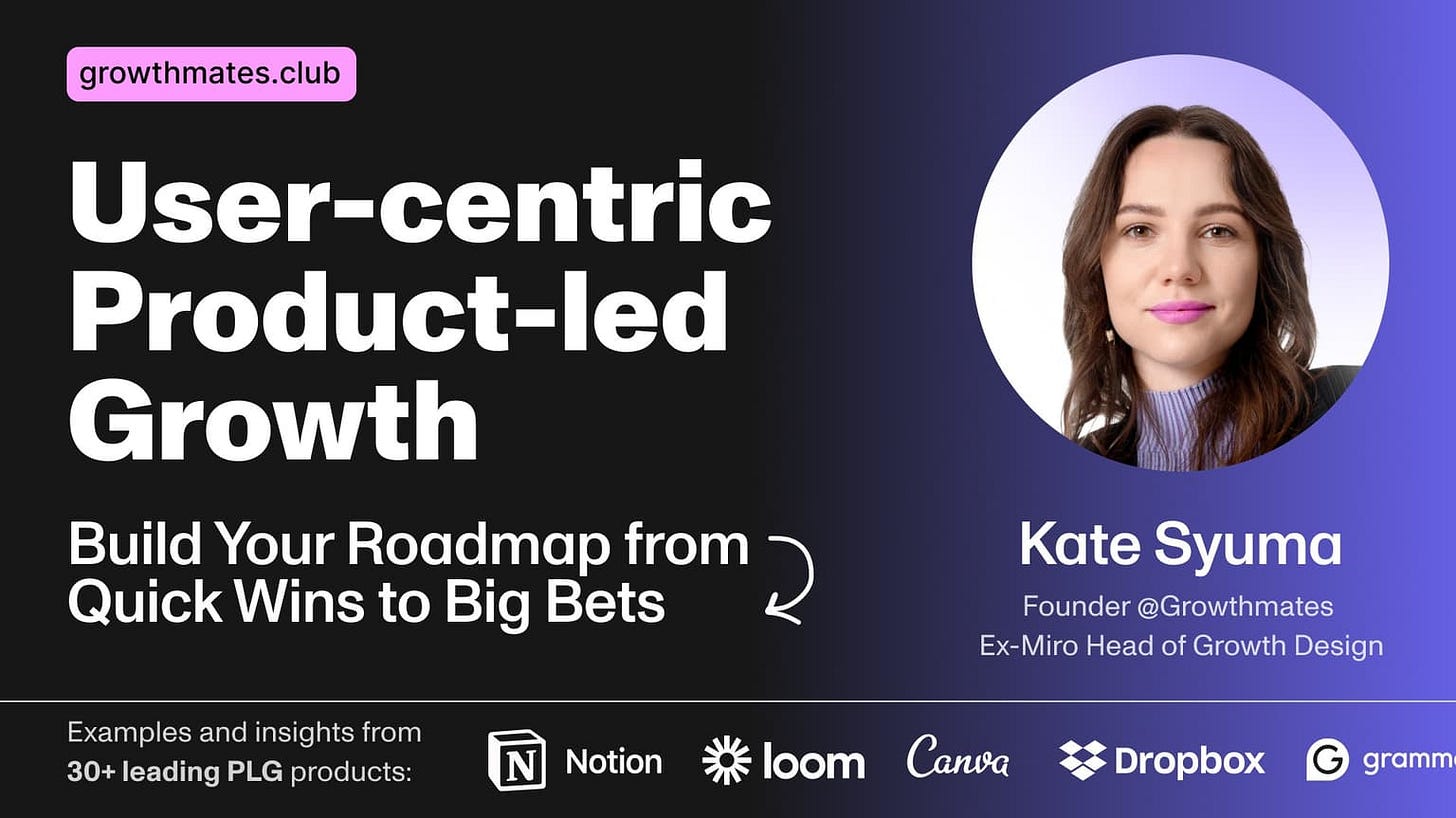
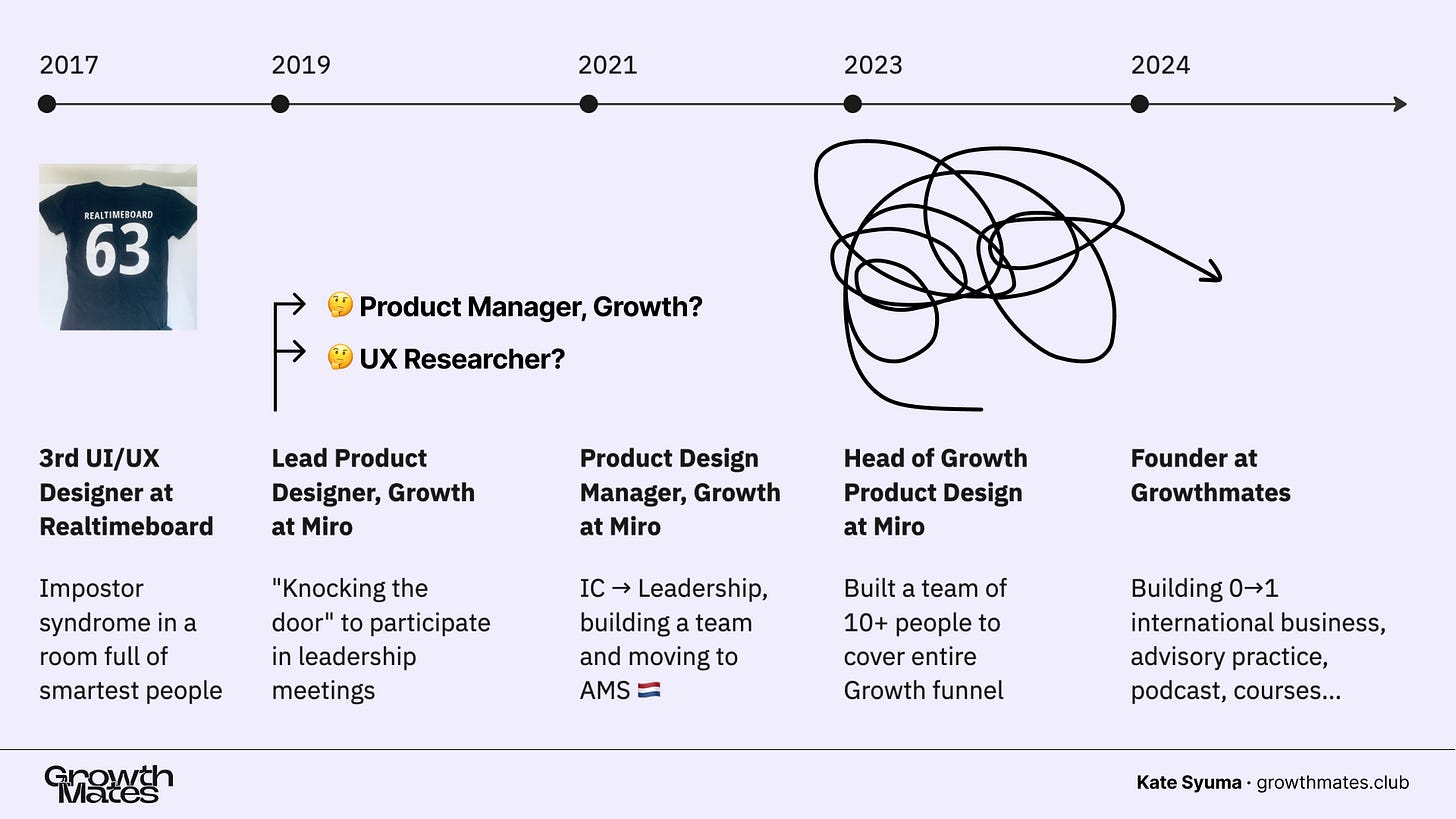



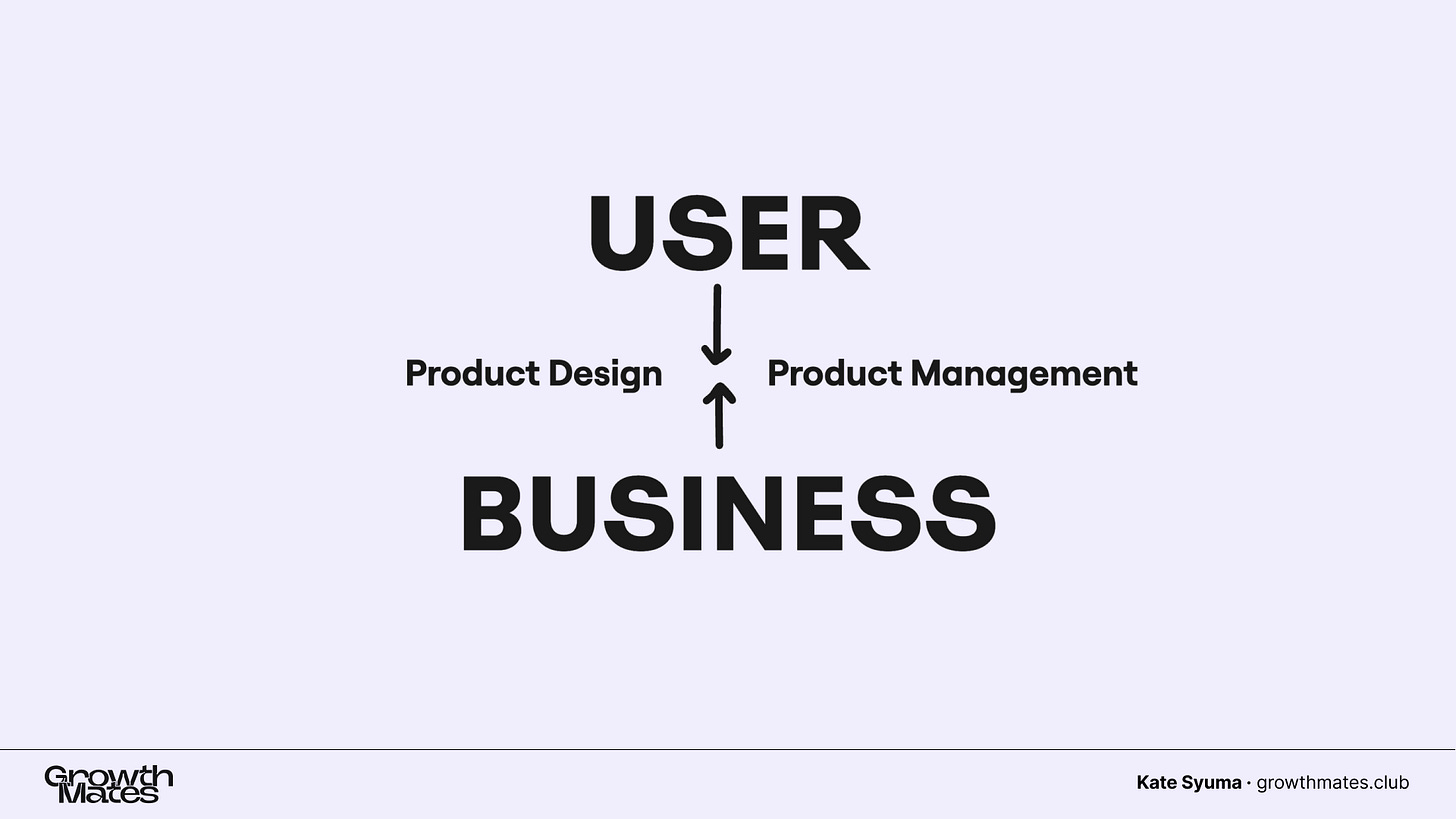

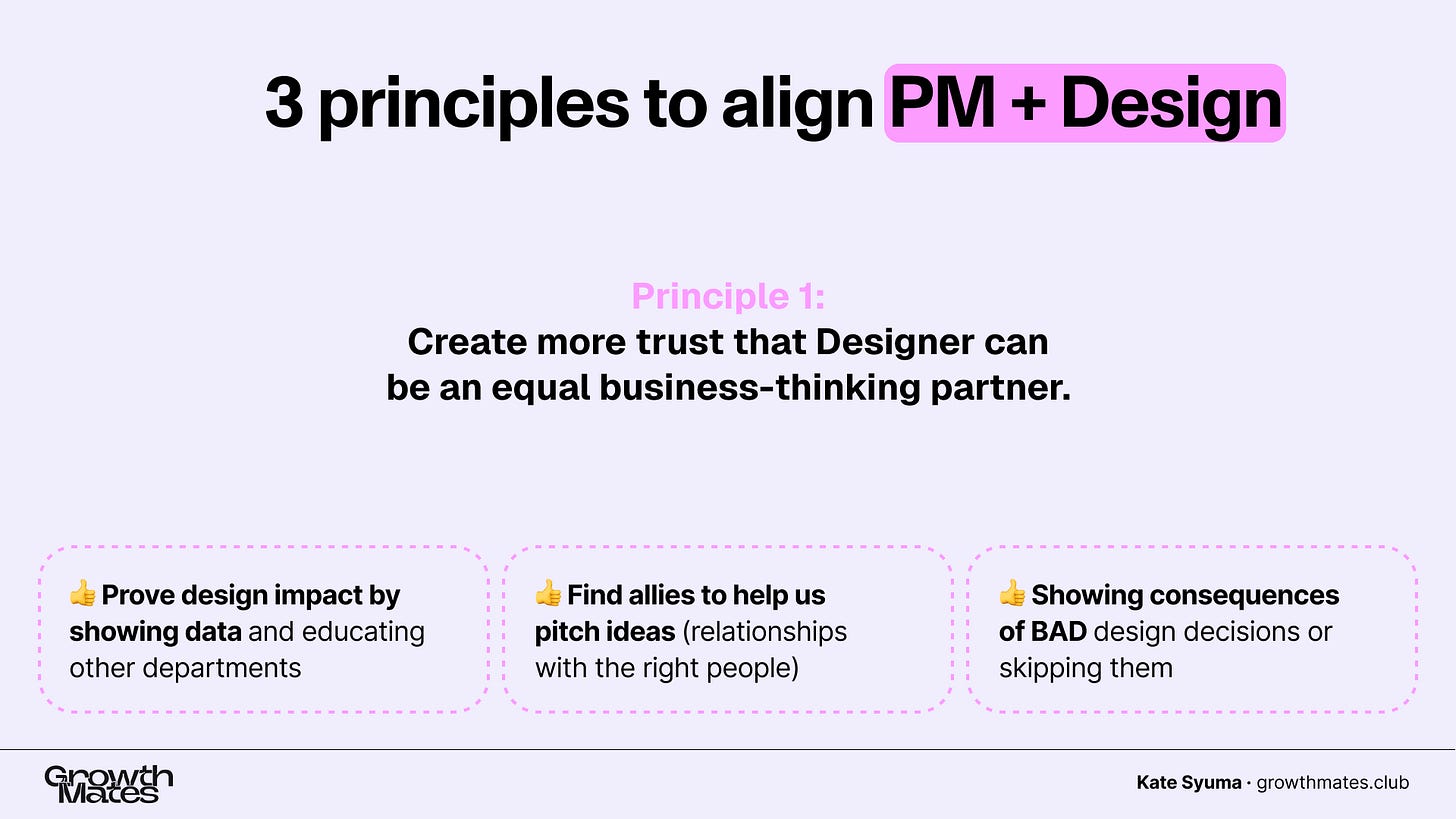
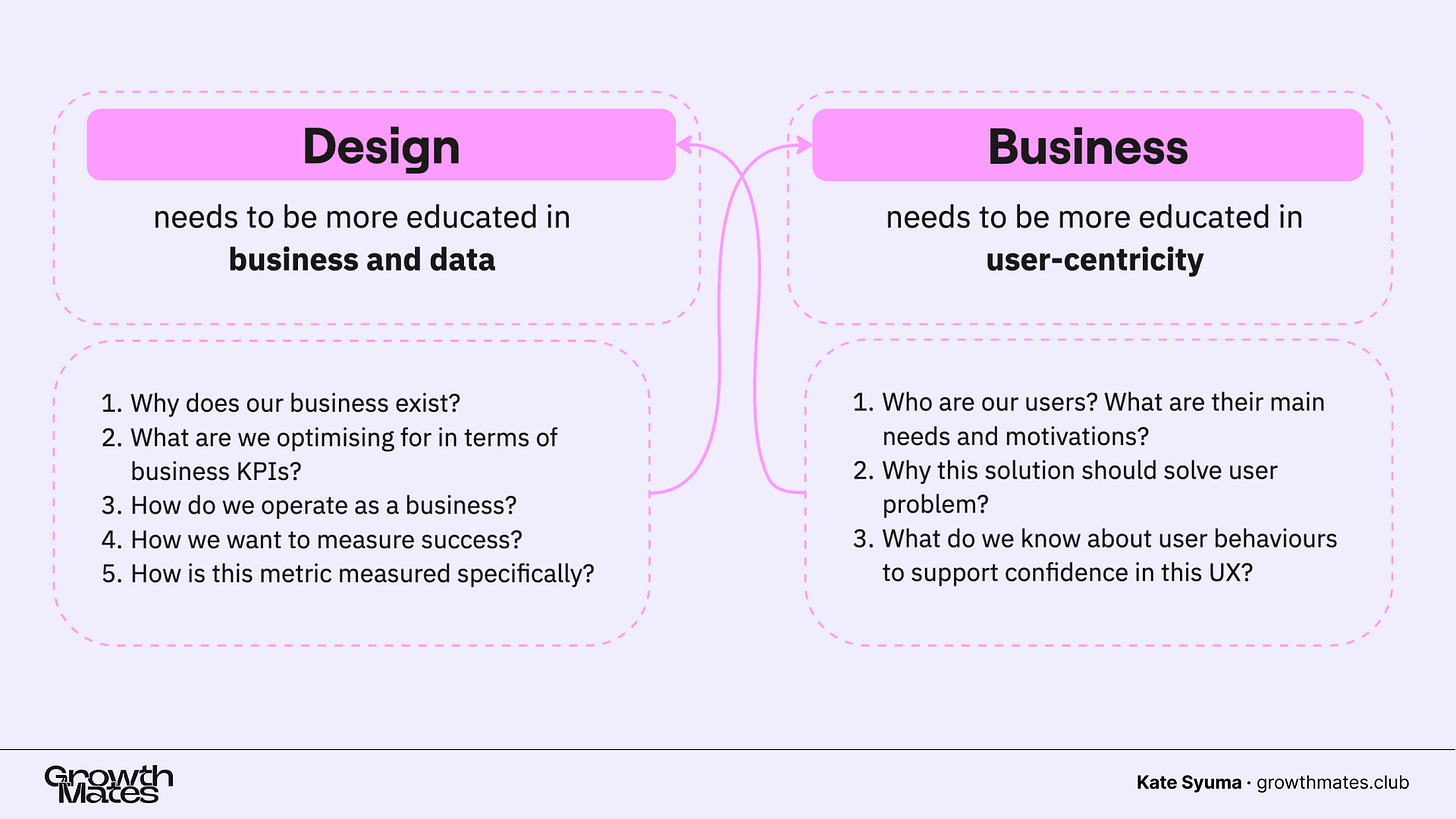
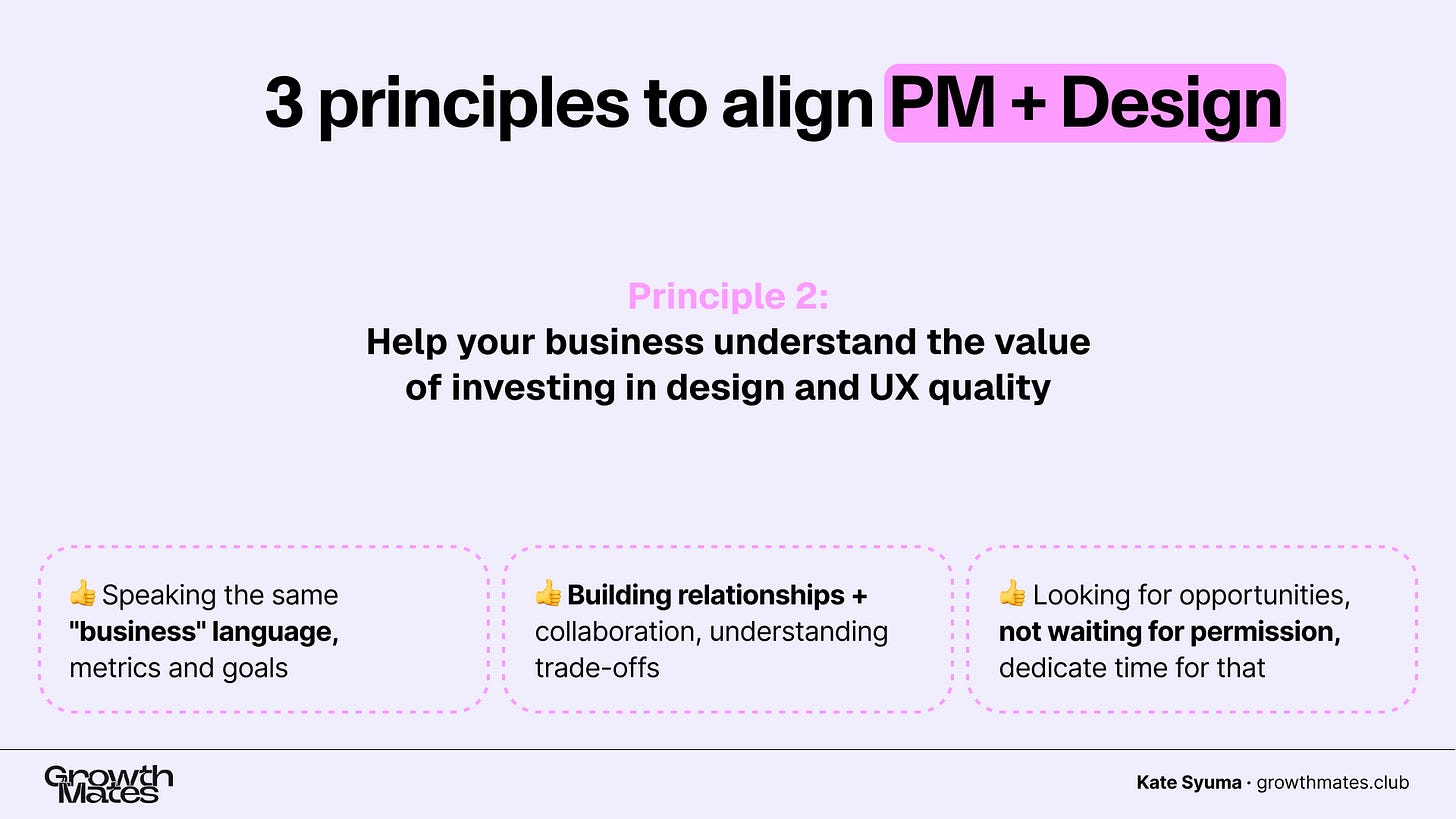
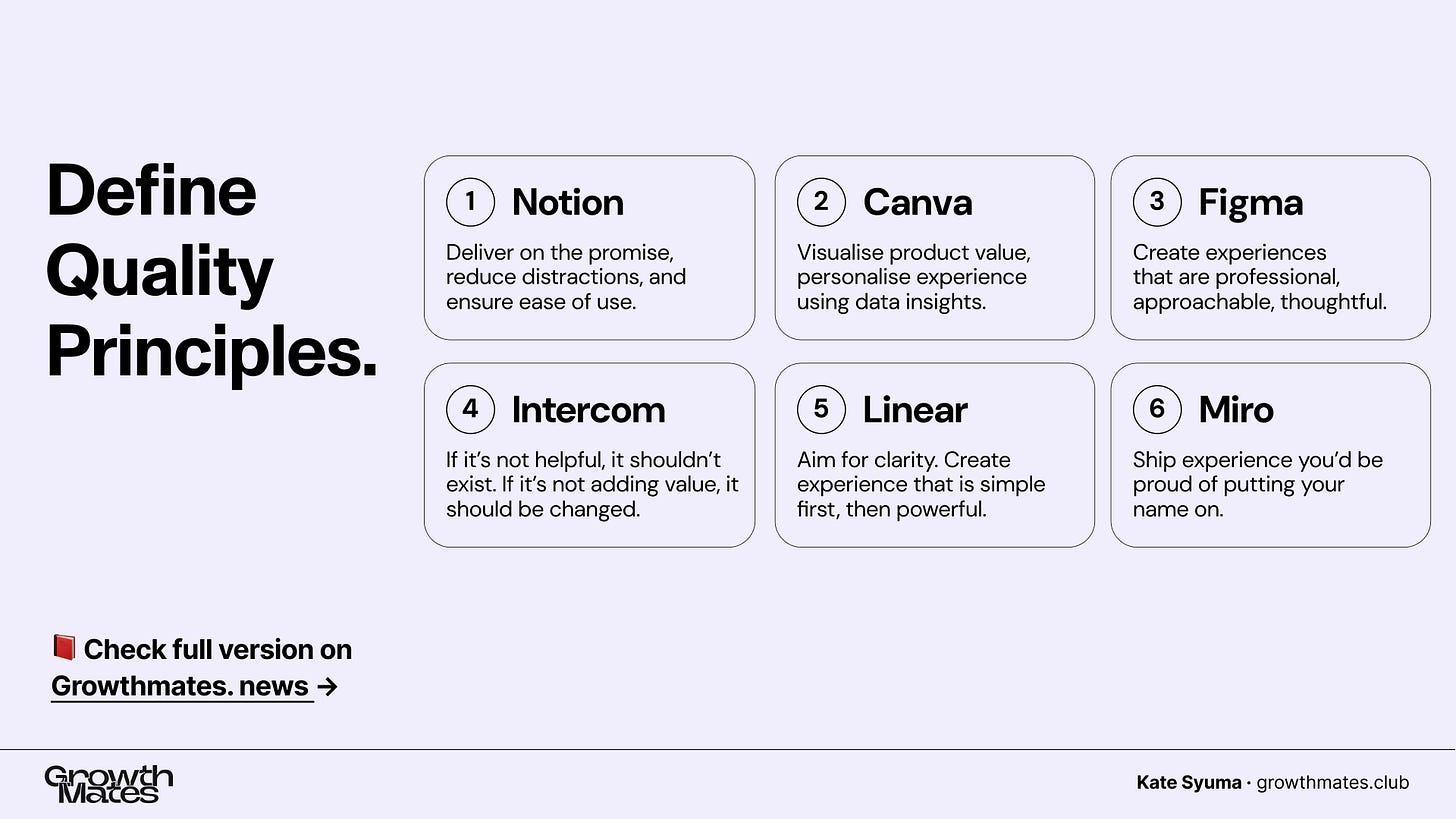
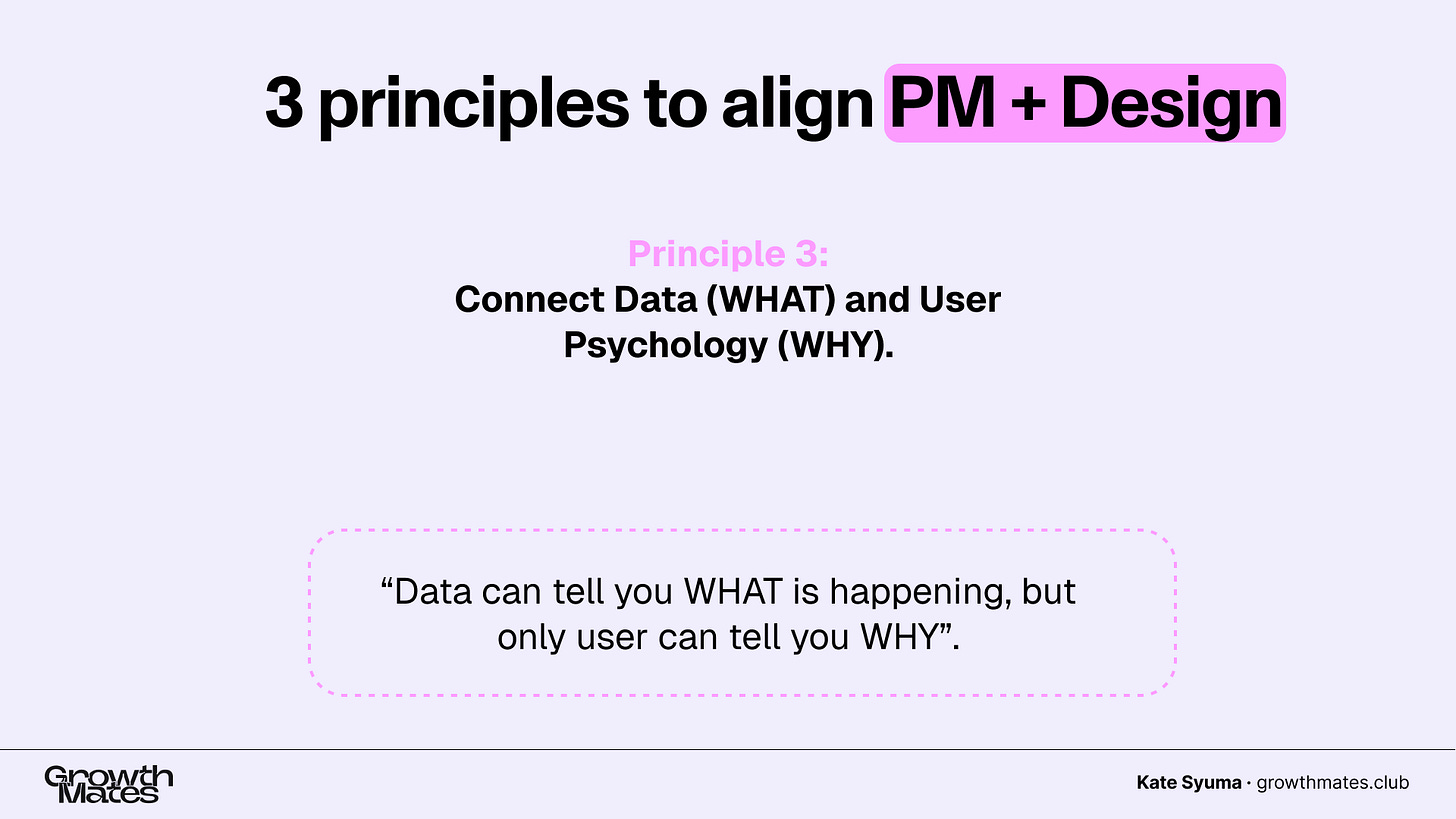
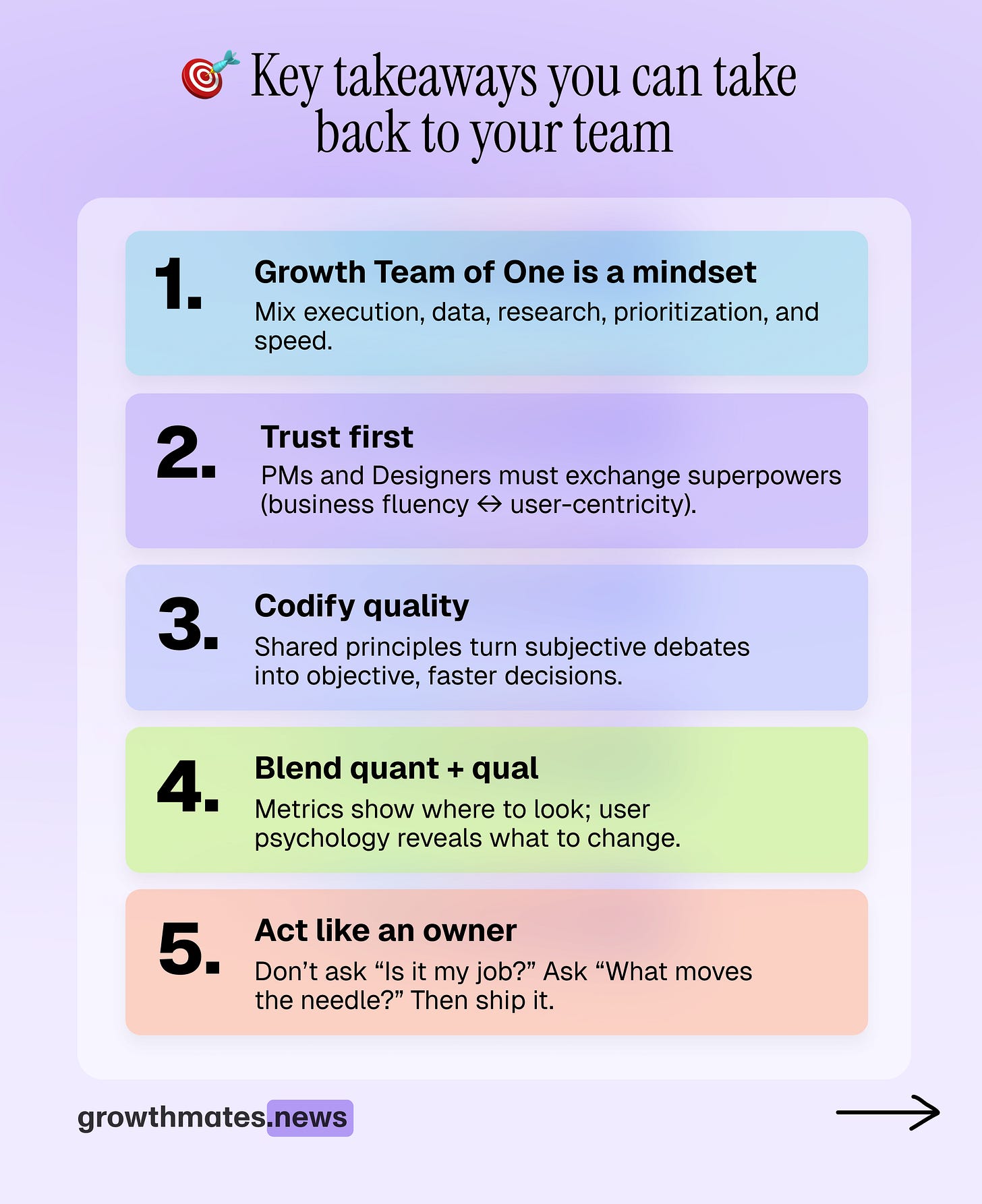
Nice reading! This reminds me of early-stage startups where founders have to be the growth, product, and design team all at once.
Loved this peek behind the curtain, Kate - it’s such a great reminder that being a “generalist” doesn’t mean being vague. It means being sharp in multiple ways. That mix of autonomy and agility is where the real growth magic happens. Especially when you stop thinking of roles and start thinking in outcomes.
(If you're juggling hats, save time by using LinkedIn’s “featured” section to keep your lead magnets or course links always visible on your profile.)
What’s been the hardest mindset shift for you in growing from designer to founder?